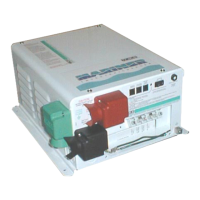$33(1',;&5()(5(1&(7$%/(6*5$3+6
&RS\ULJKW7UDFH(QJLQHHULQJ&R,QF 7HOHSKRQH 3DUW1XPEHU
WK
6WUHHW1( )D[ 2FWREHU
$UOLQJWRQ:$86$ ZZZWUDFHHQJLQHHULQJFRP 3DJH
$SSHQGL[&5HIHUHQFH7 DEOHV*UDSKV
7\SLFDO3 R ZHU&RQVXPSWLR QRI&RPPRQ$SSOLDQFHV
TIME IN MINUTES
APPLIANCE WATTS
5 15 30 60 120 240
Single PL Light 10 .1 .3 .7 1.3 2.7 5.3
B & W TV 50 .4 1 2 4 8 17
Computer 100 1 2 4 8 17 34
Color TV 200 2 4 8 17 34 67
Blender 400 3 8 17 34 67 133
Skil Saw 800 6 17 34 67 133 266
Toaster 1000 8 23 46 93 185 370
Microwave 1200 10 28 57 114 227 455
Hot Plate
1800 15 44 88 176 353 706
AMP-HOURS
If the current draw at 120 VAC is known, then the battery amperage at 12VDC will be 10 times the
AC amperage divided by the efficiency (90% in this table).
Motors are normally marked with their running rather than their starting current. Starting current can
be five times running current. Keep this in mind when sizing a motor into a system.
Refrigerators and icemakers typically run about 1/3 of the time. Therefore, their average battery
current draw is 1/3 what their amp rating would indicate.

